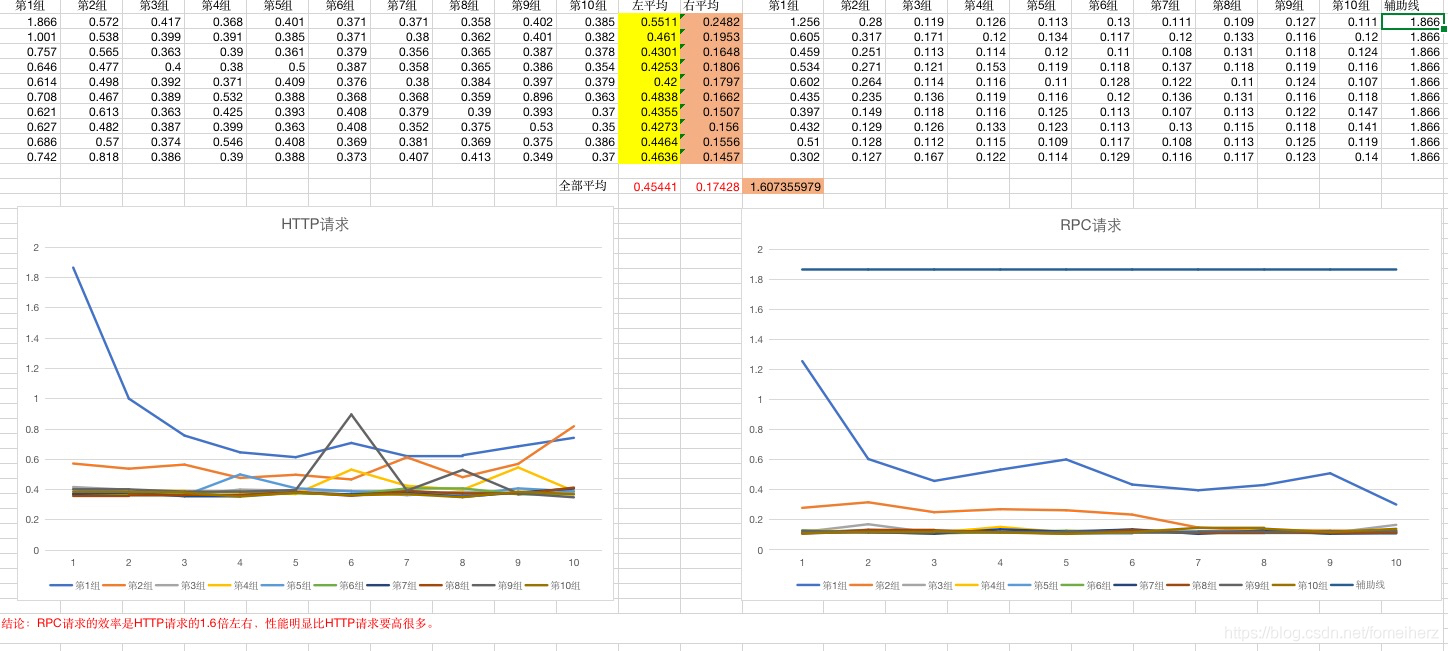Beginnen wir mit der Schlussfolgerung: Die Effizienz von RPC-Anforderungen ist etwa 1,6-mal so hoch wie die von HTTP-Anforderungen, und die Leistung ist erheblich höher als die von HTTP-Anforderungen.
Ursachenanalyse: RESTful basiert auf dem HTTP-Protokoll für die Interaktion. Das HTTP-Protokoll enthält eine große Menge an Informationen zu Anforderungsheadern und Antwortheadern. Dubbo basiert auf Dubbos benutzerdefiniertem Binärprotokoll für die Übertragung. Der Nachrichtentext ist relativ einfach und die Übertragungsdaten sind viel kleiner.

HTTP-Anforderungscode:
// 服务端基于spring boot搭建
// 服务端代码
@SpringBootApplication
@RestController
public class DemoApplication {
public static void main(String[] args) {
SpringApplication.run(DemoApplication.class, args);
}
@RequestMapping("/helloworld")
public String helloworld() {
return "hello world";
}
}
// 客户端代码
import org.springframework.util.StopWatch;
import org.springframework.web.client.RestTemplate;
public class HelloworldTest {
public static void main(String[] args) {
RestTemplate restTemplate = new RestTemplate();
StopWatch stopWatch = new StopWatch();
stopWatch.start();
for (int j = 0; j < 10; j++) {
System.out.println("------------------");
for (int i = 1; i <= 10000; i++) {
restTemplate.getForObject("http://127.0.0.1/helloworld", String.class);
if (i % 1000 == 0) {
stopWatch.stop();
System.out.println(stopWatch.getTotalTimeSeconds());
stopWatch = new StopWatch();
stopWatch.start();
}
}
}
}
}
RPC-Code:
// dubbo-demo工程的代码,详情请看:https://github.com/apache/dubbo/tree/master/dubbo-demo
// 服务端
public class DemoServiceImpl implements DemoService {
@Override
public String sayHello(String name) {
return "Hello " + name + ", response from provider: " + RpcContext.getContext().getLocalAddress();
}
}
// 客户端
public class Consumer {
public static void main(String[] args) {
//Prevent to get IPV6 address,this way only work in debug mode
//But you can pass use -Djava.net.preferIPv4Stack=true,then it work well whether in debug mode or not
System.setProperty("java.net.preferIPv4Stack", "true");
ClassPathXmlApplicationContext context = new ClassPathXmlApplicationContext(new String[]{
"META-INF/spring/dubbo-demo-consumer.xml"});
context.start();
DemoService demoService = (DemoService) context.getBean("demoService"); // get remote service proxy
StopWatch stopWatch = new StopWatch();
stopWatch.start();
for (int j = 0; j < 10; j++) {
System.out.println("-----------");
for (int i = 1; i <= 10000; i++) {
demoService.sayHello("world"); // call remote method
if (i % 1000 == 0) {
stopWatch.stop();
System.out.println(stopWatch.getTotalTimeSeconds());
stopWatch = new StopWatch();
stopWatch.start();
}
}
}
}
}